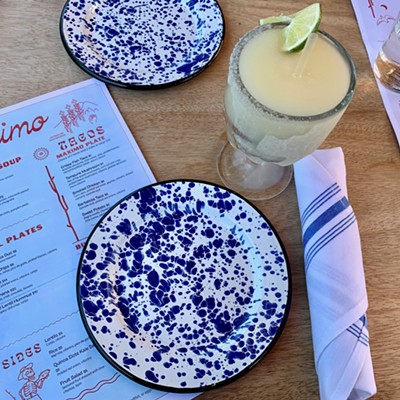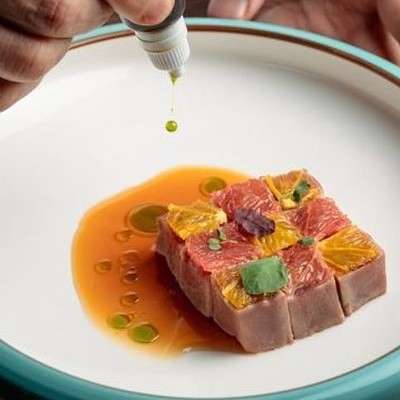In the United States, KitKat candy bars are usually blocky rectangles of four vanilla wafers covered in milk chocolate. However, in Japan, there are more than 200 different kinds, with special editions released each year. Some are somewhat savory. Others are intended to be frozen or even baked.
The KitKat was invented in 1935 by Rowntree’s of York in England after a suggestion from a worker to come up with “a snack that a man can take to work in his pack.” The original name for the bar was Rowntree’s Chocolate Crisp. The KitKat name had been previously used in the 1920s for a brand of boxed chocolates, then was discontinued. The name was reapplied to the new invention, and this time it stuck.
Rowntree’s grew to be the fourth-largest confectionery in the world before being acquired by Nestlé in 1988. However, The Hershey Company already had a license from Rowntree's to produce KitKat bars in the United States, which Nestlé is obligated to honor to this day — as long as Hershey is never sold.
The very first flavor variant was an orange KitKat, released in the United Kingdom in 1996. Other kinds have been released since then, both in Europe and the United States, including an extra-large, “chunky” KitKat and one covered in dark chocolate instead of milk. These pale in comparison to the more than 200 kinds available in Japan.
One reason for the KitKat's popularity in Japan is that the name is similar to kitto katsu, which roughly translates into the phrase "to certainly win.” So the candies are thought to be lucky and are given as gifts. Unlike the full-size bars, which are made up of four wafer sticks (also called "fingers"), many of the Japanese bars have only two, so these are much smaller than what Americans are used to. Unfortunately, all except the ubiquitous matcha tea flavor (bags of which are pretty easily found at Asian markets) are difficult to obtain in the United States.
Random assortments and single-flavor bags of the bars are available for purchase online, but the cost plus shipping can be pricey. A random assortment of 12 found on Amazon, for example, costs $18.52. In other words, now is the time to make friends with people who travel to Japan often or have connections there.
Thanks to a friend who regularly travels there, we acquired a dozen different kinds of these highly coveted candies. Here’s a sampling of the huge variety that’s available. We didn't break into every single one of them (we're saving some for later), but we've added some tasting notes from us and elsewhere.
Sake: A full package of nine bars comes in the shape of a sake bottle. This is a highly coveted flavor that Nestlé says combines "“the elegant taste of sake, wrapped in the gentle sweetness of white chocolate."
Rum Raisin: The fact that there are no booze-flavored KitKats in the United States makes this Japanese flavor seem even more unfair. We're saving this one for later, but some say this tastes like white chocolate with a rum aftertaste.
Hot Japanese Chili: Let that perky yellow pepper on the wrapper serve as a warning to those of meek palates. This KitKat includes ichimi togarashi, a kind of roasted ground red chile pepper. The heat doesn't kick in immediately, but certainly makes itself known after a bite or two.
Sweet Purple Potato: In Japanese, this flavor is called beni imo. It may sound odd to Westerners for candy to be flavored with sweet potato, but in Asian cuisine, incorporating vegetables and legumes into desserts is common. Another example would be the sweet red bean flavor as described below.
Red Bean: Named the Hokkaido red bean after the second-largest island of Japan, this flavor isn't going to seem unusual to anyone who loves the deep-fried red bean buns during Chinese dim sum.
Golden Citrus Blend: There are other kinds of citrus KitKat bars, but this one combines lemon, tangerine and lime.
Cheesecake: This may be the most unusual KitKat since it is intended to be baked. Watch the video above to see what happened when we tried it in a toaster oven. It's a fairly sweet variety, but the end result is warm, slightly browned, creamy and an overall fun experience.
Strawberry Cheesecake: Unlike the one above, the limited-edition Yokohama Strawberry Cheesecake KitKat should be eaten normally, not baked. Sandwiched between the wafers are layers of strawberry-flavored cream cheese.
Pancake and Maple Syrup: Nestlé releases special flavors for Easter, so this is also known as the Happy Easter flavor. It's not clear what exactly pancakes soaked in maple syrup have to do with Easter, but no one cares about applying logic to this because this flavor is glorious. Covered in white chocolate, it tastes exactly as it sounds.
Wasabi: The wasabi has less peppery punch than the Japanese Hot Pepper. The white chocolate and wasabi coating is a pretty, pale green. The heat and sweet are so beautifully balanced that this is actually a favorite flavor.
Apple: The Shinshu Apple KitKat may be the loser in the bunch, as one reviewer says it tastes exactly like apple-scented hair spray. Yikes. Japan can have this one.
Vanilla Ice Cream: No, this KitKat isn't made of ice cream. It's just meant to be treated that way. Nestlé intends for this bar to be frozen before eating. So it's like vanilla ice cream but crunchier, and there's no way that's a bad thing.
So why does America get the short end of the stick when it comes to amazing KitKat flavors? The best guess is that since The Hershey Company is the largest chocolate manufacturer in North America and has the license for making KitKat bars in the United States, it doesn't make financial sense for it to take a chance on "risky" flavors that don't use the company's chocolate. Still, the situation seems unfair, so it may make sense to let Hershey know that America is ready for its own ambitious KitKat bars.
Support Us
Houston's independent source of
local news and culture
account
- Welcome,
Insider - Login
- My Account
- My Newsletters
- Contribute
- Contact Us
- Sign out
[
{
"name": "Related Stories / Support Us Combo",
"component": "11591218",
"insertPoint": "4",
"requiredCountToDisplay": "4"
},{
"name": "Air - Billboard - Inline Content",
"component": "11591214",
"insertPoint": "2/3",
"requiredCountToDisplay": "7"
},{
"name": "R1 - Beta - Mobile Only",
"component": "12287027",
"insertPoint": "8",
"requiredCountToDisplay": "8"
},{
"name": "Air - MediumRectangle - Inline Content - Mobile Display Size 2",
"component": "11591215",
"insertPoint": "12",
"requiredCountToDisplay": "12"
},{
"name": "Air - MediumRectangle - Inline Content - Mobile Display Size 2",
"component": "11591215",
"insertPoint": "4th",
"startingPoint": "16",
"requiredCountToDisplay": "12"
}
,{
"name": "RevContent - In Article",
"component": "12527128",
"insertPoint": "3/5",
"requiredCountToDisplay": "5"
}
]
KEEP THE HOUSTON PRESS FREE...
Since we started the Houston Press, it has been defined as the free, independent voice of Houston, and we'd like to keep it that way. With local media under siege, it's more important than ever for us to rally support behind funding our local journalism. You can help by participating in our "I Support" program, allowing us to keep offering readers access to our incisive coverage of local news, food and culture with no paywalls.
Phaedra Cook
Contact:
Phaedra Cook
Trending Food & Drink
- Upcoming Houston Food Events: Greek Easter and a Top Taco Throwdown
- Where to Brunch in Houston This Mother’s Day 2024
- The 10 Most Useless Kitchen Appliances
-
Sponsored Content From: [%sponsoredBy%]
[%title%]

Don't Miss Out
SIGN UP for the latest
food & drink
news, free stuff and more!
Become a member to support the independent voice of Houston
and help keep the future of the Houston Press FREE
Use of this website constitutes acceptance of our
terms of use,
our cookies policy, and our
privacy policy
The Houston Press may earn a portion of sales from products & services purchased through links on our site from our
affiliate partners.
©2024
Houston Press, LP. All rights reserved.




